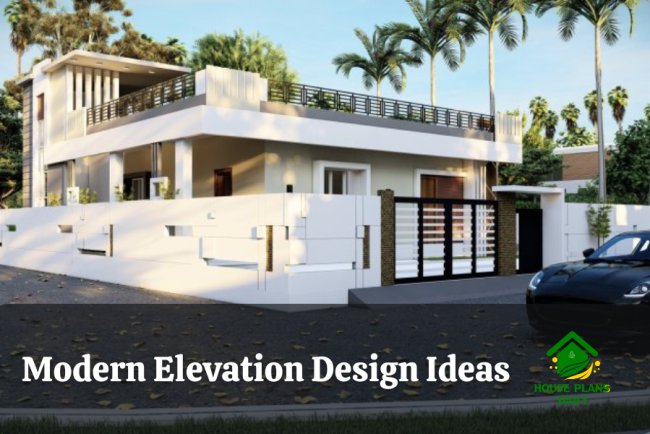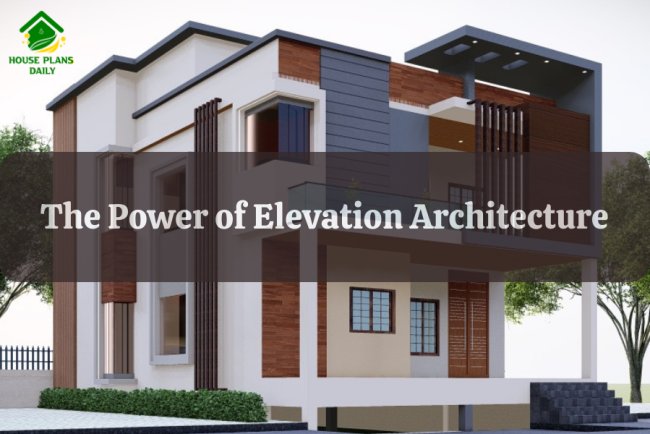Indian House Elevation Designs | Design Elevation
Discover a collection of Indian house elevation designs and find inspiration for your dream home. Browse through captivating home elevation design images and get ideas for your own project.
Understanding Indian Architecture
Understanding Indian Architecture in House Elevation Designs
Indian architecture is characterized by its diversity and multifaceted nature, with a history spanning thousands of years. Specific to house elevations, one of the traditional architectural styles prevalent in India is the 'Vaastu Shastra', an ancient Indian system of architecture that has been used for designing houses, offices, temples, and other buildings in India for several centuries. This system is rooted in Hindu traditions and encompasses specific geometric patterns and directional alignments that are believed to bring prosperity.
Elevations in Indian architecture are often multidimensional, featuring intricate carvings, balconies, and ornate window frames, reflecting the craftsmanship of the era. In many parts of India, houses also feature 'jharokhas' (an intricate stone window), 'chajjas' (overhanging eaves above windows and doors), and 'chhatris' (elevated, dome-shaped pavilions used as an element in Indian architecture), that act as both functional and aesthetic components.

Influential Factors in Indian House Elevation Designs
Climate significantly influences Indian architecture. In warmer regions, houses tend to have high ceilings and large windows for better air circulation. In contrast, houses in colder areas are built with lower ceilings and smaller windows to conserve heat. The orientation also plays a significant role in designing as per Vaastu Shastra principles. Traditional Indian homes abide by these principles, which dictate the placement of doors, windows, and rooms according to the cardinal directions.
Materials such as local brick, mud, stone, and wood abundantly available in the respective geographical locations have influenced the structure and appearance of houses across different regions in India, contributing to the diversity in design.
Transition to Contemporary Indian Architecture
Contemporary Indian architecture, while still drawing from traditional sensibilities, weaves in modern design philosophies. The modern house designs in India still carry the flamboyance of traditional architecture but are expressed using materials like glass, steel, and concrete in a minimalist manner. Applying both flat and sloping roofs, wide balconies, large windows, and incorporating green elements like vertical gardens and open spaces have become popular in modern Indian house design philosophy.
Sustainability has become a key element in current architectural practices in India. Green architecture, environmentally friendly materials, energy efficiency, and vernacular architectural practices are some of the trending concepts. For instance, the addition of solar panels, rainwater harvesting systems, and maximized natural lighting have been implemented in modern Indian house designs as a response to environmental changes.
To Sum It Up
The design of Indian house elevations is shaped by a complex mix of factors including functionality, religious traditions, the need to react to specific climate conditions, the availability of local materials, and a growing focus on sustainability. This blend of influences leads to a unique result that combines both traditional and modern features, encapsulating the rich cultural diversity and fluid architectural trends in India.

Key Elements of Indian House Elevation Designs
Exploring the Core of Indian House Elevation Designs
When it comes to grasping the intricacies of Indian house elevation designs, one must appreciate the significant aspects that define them. These include the use of vibrant colors, a variety of forms and materials, unique construction styles, and exquisite decorative elements.
Use of Colors in Indian House Elevation Designs
Colors play a vital role in Indian house elevation designs. Traditionally, warm hues like saffron, red, and gold are popular choices due to their cultural significance. However, modern designs are exploring a palette that extends beyond these traditional colors, incorporating a range from earthy tones to vibrant pastels.
Forms in Indian House Elevation Designs
Forms in Indian houses vary greatly from region to region, influenced strongly by the local culture and climate. Flat roofs, courtyards, and verandahs are common elements in hot and dry regions, while homes in colder regions might have slanted roofs and enclosed spaces. The chaotic, organic layouts of older Indian cities show a penchant for intricately carved arches, domes, and pillars.
Materials used in Indian House Elevation Designs
Material selection is highly influenced by the local availability of resources. In the past, homes in India were built using locally available materials such as mud, thatch, bamboo, and stone. Modern Indian houses, however, use a variety of materials including brick, cement, steel, and glass. Yet, the influence of local materials can be still seen in the use of various claddings and finishes.
Construction Styles in Indian House Elevation Designs
Construction styles in India range from the elaborate carvings seen in traditional homes to the contemporary use of straight lines and minimalist aesthetics. The country's colonial past has also left its mark on construction styles, with many homes featuring European-style elements such as hipped roofs and arched windows.
Decorative Elements in Indian House Elevation Designs
Indian house elevation designs are often decorated with intricate motifs drawn from the country's rich tradition of folk and classic art forms. You are likely to see motifs like lotus flowers, elephants, and peacocks etched in wood, stone or modern materials in Indian homes. In more contemporary Indian homes, these decorative elements may come in the form of artworks, murals and sculptures.
Indian home designs possess a distinctive charm and identity, created through the careful blend of color, form, materials, construction styles, and decorative elements. The harmonious creation of these components produces a structure that exudes an authentically Indian personality.
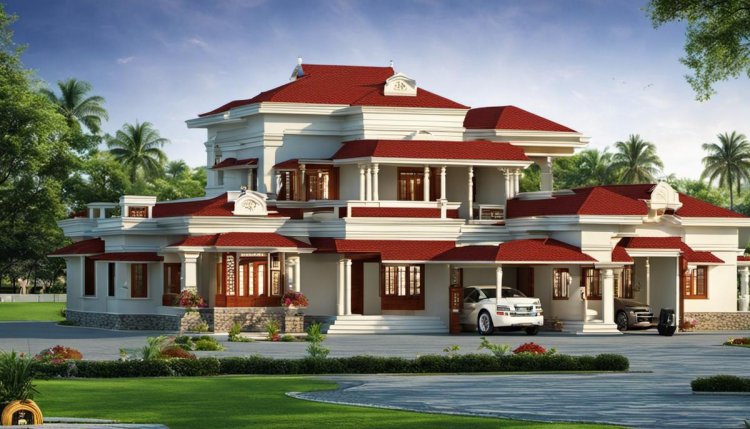
Exploring Regional Variations in Indian House Elevations
Indian House Designs Vary by Region
Just as India's culture, language, and history are multi-faceted, so too is its architecture. This richness is encompassed in the variety of house elevation designs found across the nation. Factors such as geography, culture, and history have significantly impacted these designs, resulting in each region expressing its unique visual language.
The Dravidian Architectural Style in Southern India
In the southern part of India, the Dravidian architectural style is dominant. The design elements in this region's housing elevations reflect the impact of the Dravidian architecture. Known for their intricate detailing, the Dravidian style designs sophisticated, complex house elevations, showcasing symmetrical temple-like tiers. The Dravidian architecture usually includes a step-like design, with increasing intricacy towards the top. The houses may also have grand entrances and imposing pillars.
The Indo-Aryan Architectural Style in Northern India
Moving to the north of India, the Indo-Aryan architectural style is predominant. Reflecting the influences of Mughal and Persian architecture, this style is known for its dome-shaped roofs, large verandas, carved doors with intricate lattice work, and frescoes. The house elevations in this region focus on balance and symmetry, with courtyards being a significant feature. The balconies often feature decorative brackets and the roofs are typically sloping to counter the region's heavy snowfall.
Tribal Aesthetics and Local Materials in Northeastern India
In the northeastern states of India, the local houses present a unique blend of tribal aesthetics and practical design. Here, transportation and construction materials come majorly from local resources, influencing the house elevation designs. Stilt houses of bamboo and other locally sourced materials are commonplace, with the elevations often focusing on adaptability to the region's weather patterns - heavy rainfall and dampness.
Color Schemes and Ornamental Elements
The diverse geographical, cultural and historical influences also etch their impressions on the color schemes, motifs, and other ornamental elements used in Indian house elevations. Whether it is the richly colored frescoes of Rajasthan, the pastel shades popular in the southern states, or the vibrant tribal motifs in the northeastern regions, each element tells a story of its region's unique history and culture.
Modern Indian Architecture
Evolving alongside these traditional designs, modern Indian architecture also seeks its inspiration from these regional variations. Incorporating traditional design elements within a contemporary context, these modern designs exhibit a distinctive fusion of old and new, creating a unique identity within the Indian architectural landscape.
A Journey Through India's Rich Cultural and Architectural Legacy
Gaining an in-depth understanding of Indian house elevation designs necessitates an expedited journey through the vast influences of geographical, cultural, and historical elements. These influential factors have sculpted the compelling variety of elevation designs and have breathed life into them. Therefore, Indian house elevation designs stretch beyond architectural models— they represent an illustrated account of India's rich history, diverse culture, and unique lifestyle.
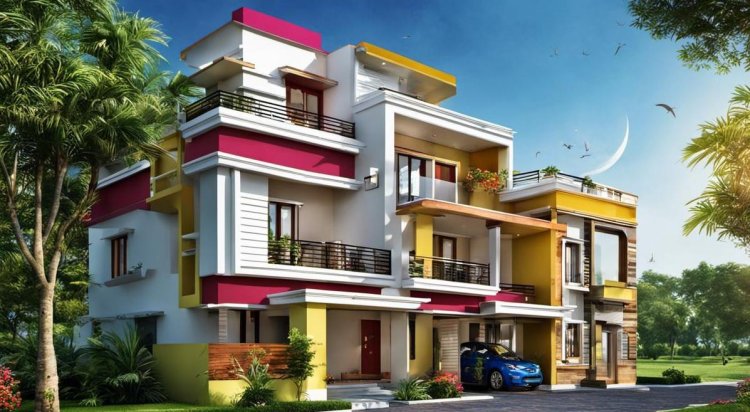
Adapting Indian House Elevation Designs for Modern Settings
Delving Deeper into Indian House Elevation Designs
The beauty and complexity of Indian house elevation designs lie in their diversity and deep connections to the country's various climatic, cultural, and historical contexts. Traditional designs frequently involve meticulous attention to detail, symmetry, and a sense of grandiosity, making use of regional architecture and materials. Commonly found features such as courtyards, verandas, and lofty ceilings serve specific functions, primarily facilitating cross ventilation and providing protection against severe weather conditions.
Fusion of Traditional and Modern Elements
In recent times, Indian house elevation designs have begun to integrate both traditional components and modern aesthetics. Architects and homeowners are identifying ways to connect the past to the present, by including traditionally-inspired facades, arches, or jalis (lattice screens) into contemporary architectural designs. This fusion creates a distinctive combination, making the building a statement piece in any neighborhood.
Examples of Fusion Designs
A prominent example of a successful fusion of traditional Indian aesthetics with modern sensibilities is found in urban dwellings. Many city houses or apartments combine sleek lines and minimalist decor, borrowed from modern design principles, juxtaposed with elements like carved wooden detailing or colorful mosaic tiles reminiscent of Indian craft traditions.
Adaptation to Modern Requirements
Traditional Indian house designs are being adapted and reinterpreted to meet the needs of modern life. Concepts like open plan living are being fused with traditional designs, spatially redefining areas of the home. For example, the traditional courtyard is sometimes transformed into indoor living spaces surrounded by glass walls, allowing natural light to permeate the interior while maintaining privacy.
Design And Sustainability
Additionally, the principle of sustainability, which is at the core of modern architectural trends, naturally aligns with many traditional Indian house designs. Traditional builders extensively used local, environmentally-friendly materials and techniques that efficiently responded to the local climate and topography.
Influence on Interior Design
This fusion of styles is also making its way into the realm of interior design. Contemporary Indian homes often utilize traditional fabrics or art forms as decor, juxtaposing them against stark, modern design elements. This blend of old and new results in interiors that simplify and modernize the richness of traditional Indian aesthetics while preserving their unique character.
Incorporating Technology
Notably, advanced architectural technologies enable architects to reinterpret traditional Indian house designs for the modern era. Cutting edge tools like Building Information Modelling (BIM) and 3D rendering now allow designers to accurately and effectively visualize traditional architectural elements within contemporary spaces, making these fusion designs more feasible and attractive to modern homeowners.
Impact of Urbanization
The rapid urbanization and population growth of Indian cities have necessitated vertical expansion. This has led to the rise of high-rise residential buildings, where designers are experimenting with integrating traditional architectural elements such as stepwells and jali screens into modern concrete structures. This not only provides visual interest but also aids in passive cooling, thereby reducing the building's energy consumption.
The intriguing world of traditional Indian house elevation designs is rapidly evolving to fit into modern contexts. The seamless blend of aged aesthetics with the sharp edge of modern design stands as a brilliant affirmation of the enduring charm and adaptability of Indian architecture.
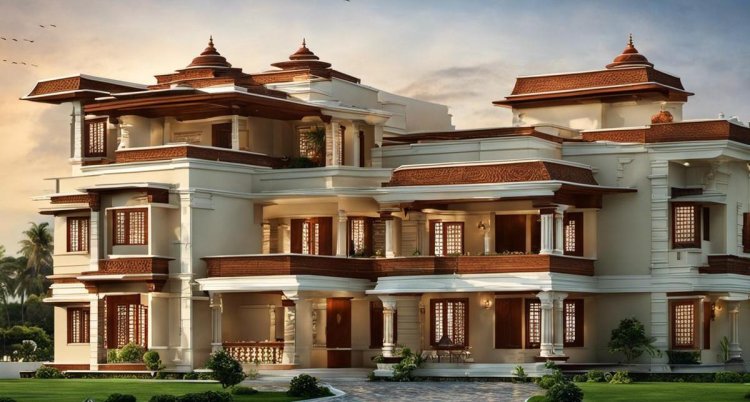
Constructive Tips to Implement Indian House Elevation Designs
Demystifying Indian House Elevation Designs
Infused with traditional Indian elements and modern design principles, Indian house elevation designs are a unique brand of architectural plans. These designs are inherent in the use of materials like stone, brick, and wood, laced with intricately patterned tiles, and stamped with vibrant color palettes. These detailed designs reveal both exterior and interior views, providing exact specifics about height, shape, and positioning for different home features. The complexity of these designs varies depending on the house size and local architectural trends.
Key Considerations for Indian House Elevation Designs
When planning to implement Indian house elevation designs, several factors need to be taken into account. These include the orientation of the house, the surrounding landscape, local climate, and personal preferences. Additionally, considerations for compliance with local building codes and regulations as well as the potential for future expansions or modifications are crucial.
Space Utilization in Indian House Elevation Designs
Effective space utilization is a key aspect of Indian house elevation designs. Indians traditionally love to live in large joint families, which requires efficient space planning to accommodate everyone comfortably. Therefore, designers need to consider how to maximize space; this may include strategically incorporating open floor plans, multi-purpose rooms, and storage solutions that ensure sufficient living area and privacy for all occupants.
Materials in Indian House Elevation Designs
The preference for materials in Indian house elevation designs veers towards the natural and sustainable. Stone, wood, and brick are common choices, but combined with concrete and steel for strength and sustainability. There is also a preference for vibrant, often earthy, colors that reflect India's rich and varied landscapes. However, the final decision on materials often comes down to climate suitability, durability, maintenance needs, and cost.
Tips for Working with Architects and Designers
When executing an Indian house elevation design, it's best to work in tandem with professional architects and designers who are familiar with these traditional concepts. Be clear about your requirements and preferences, allow them to propose innovative, workable solutions and be open to their suggestions and ideas. Ensure regular communication to keep the design process on track for a successful completion.
Specific Design Tips for Varied House Sizes
For larger houses, Indian elevation designs can incorporate grand entranceways, big windows for good natural lighting, and possibly even internal courtyards. In contrast, smaller houses can use clever design techniques to create the illusion of space. This could involve open floor plans, using mirrors, and choosing lighter color palettes. Furthermore, rooftop gardens or terraces are prevalent in Indian design, whatever the house size or locale, providing an outdoor retreat and helping keep interiors cool.
Finally, for all house sizes and types, it's essential to blend functionality with aesthetics to the maximum extent possible in Indian elevation designs, to create homes that are both practical and beautiful.
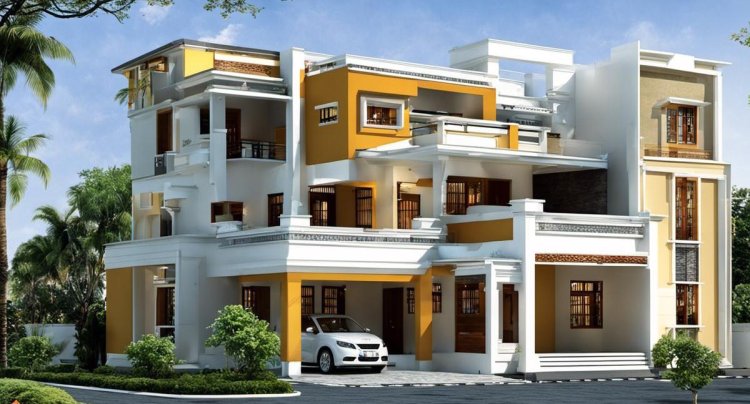
As we transcend through the multifaceted labyrinth of Indian house elevation designs, we appreciate the delicate balance between preserving centuries-old architecture traditions and adapting them to resonate with modern sensibilities—a picturesque narrative of cultural preservation and architectural development. Navigating through regional variations, we marvel at the country’s diversity reflected in its architecture. Finally, as we equip ourselves with practical implementation strategies, we ready ourselves to translate this knowledge into reality, landscape by landscape, house by house. The journey through this vivid architectural terrain leaves us enriched, enlightened, and empowered, opening limitless horizons for sculpting our own house elevation designs inspired by the grandeur of Indian architecture.



